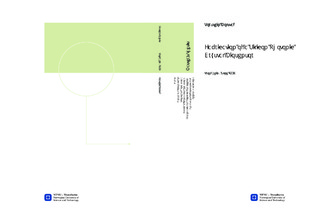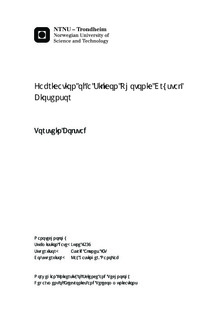| dc.contributor.advisor | Aksnes, Astrid | nb_NO |
| dc.contributor.advisor | Gastinger, Kay | nb_NO |
| dc.contributor.author | Bolstad, Torstein | nb_NO |
| dc.date.accessioned | 2014-12-19T13:28:20Z | |
| dc.date.available | 2014-12-19T13:28:20Z | |
| dc.date.created | 2014-08-21 | nb_NO |
| dc.date.issued | 2014 | nb_NO |
| dc.identifier | 739830 | nb_NO |
| dc.identifier | ntnudaim:11123 | nb_NO |
| dc.identifier.uri | http://hdl.handle.net/11250/249513 | |
| dc.description.abstract | The research performed in the scope of the master project and described in this thesis is devoted to the study of a two dimensional photonic crystal biosensor in silicon. The band gap of hexagonal photonic crystal slab structures is simulated using MIT Photonic-Bands (MPB) and the dependence of slab thickness, substrate and hole depth is found. The effect of relevant fabrication errors are investigated with COMSOL Multiphysics. It is found that even small fabrication errors leads to a resonance peak split.The photonic crystal is fabricated using a focused ion beam (FIB) system. The effect of ion beam energy, current and dwell time on the fabricated holes are studied on uncovered silicon samples and silicon samples covered with 40nm titanium dioxide and 100nm silicon dioxide thin films. The best result was achieved for a titanium dioxide covered sample milled with 30kV ions at a current of 9pA, a dwell time of 1ms, and a dose of 666.65 pC per square micro meter yielding a sidewall angle of 3.2 degrees. Cross section of the milled holes reveas that the FIB produced very smooth hole sidewalls. Patterning of a silicon oxide hard mask with FIB for inductively coupled plasma reactive ion etching (ICP-RIE) is investigated. It is found that the used etch chemistry (SF6/CHF3) gives very poor selectivity and is unsuitable for this purpose.Input and output waveguides along with a plateau to support the photonic crystal is constructed using an electron beam lithography (EBL) and ICP-RIE process adapted from previous work at NTNU. Reproducing the results are proved difficult, finally achieving a sidewall roughness of approximately 10nm.The full structure of waveguides and photonic crystal sensor is fabricated using a combination of EBL and FIB milling. The results are the best achieved at NTNU for use in photonic crystals with regards to hole shape and sidewall smoothness. | nb_NO |
| dc.language | eng | nb_NO |
| dc.publisher | Institutt for elektronikk og telekommunikasjon | nb_NO |
| dc.title | Fabrication of a Silicon Photonic Crystal Biosensor | nb_NO |
| dc.type | Master thesis | nb_NO |
| dc.source.pagenumber | 173 | nb_NO |
| dc.contributor.department | Norges teknisk-naturvitenskapelige universitet, Fakultet for naturvitenskap og teknologi, Institutt for materialteknologi | nb_NO |

